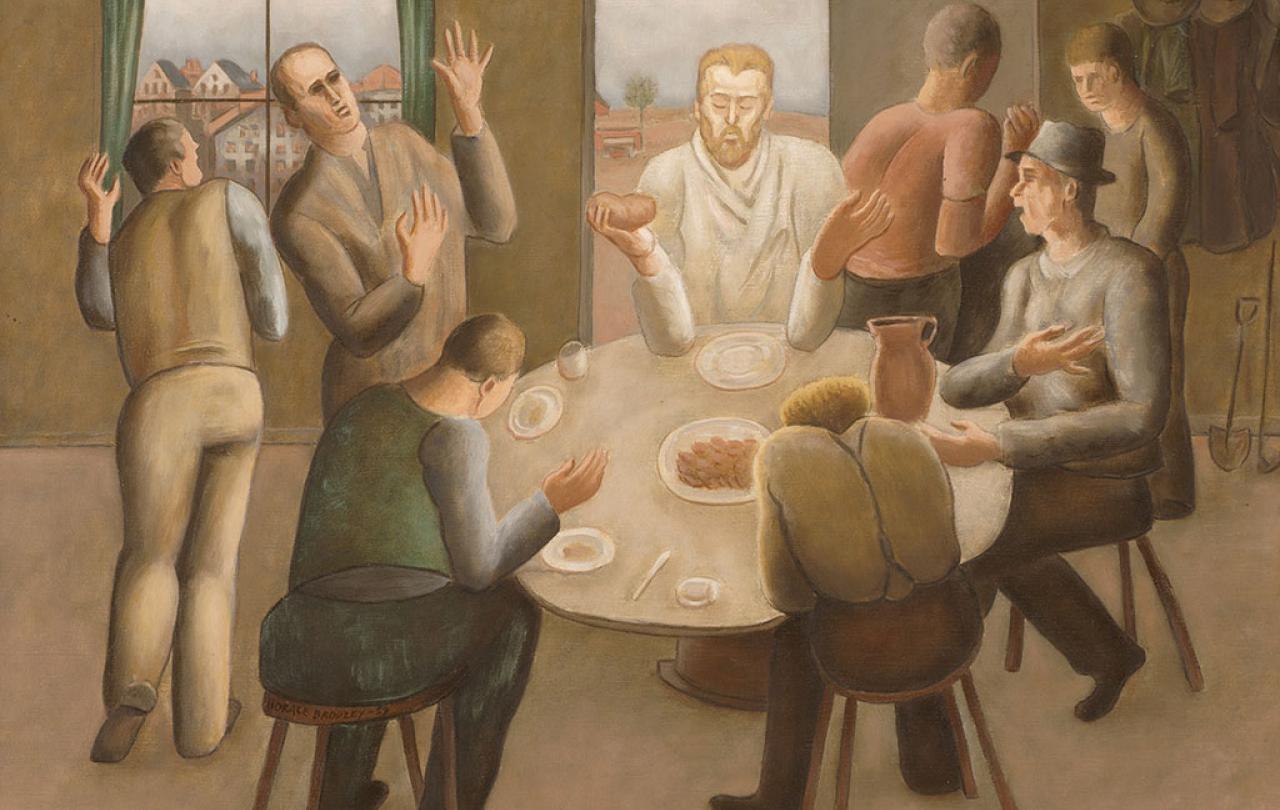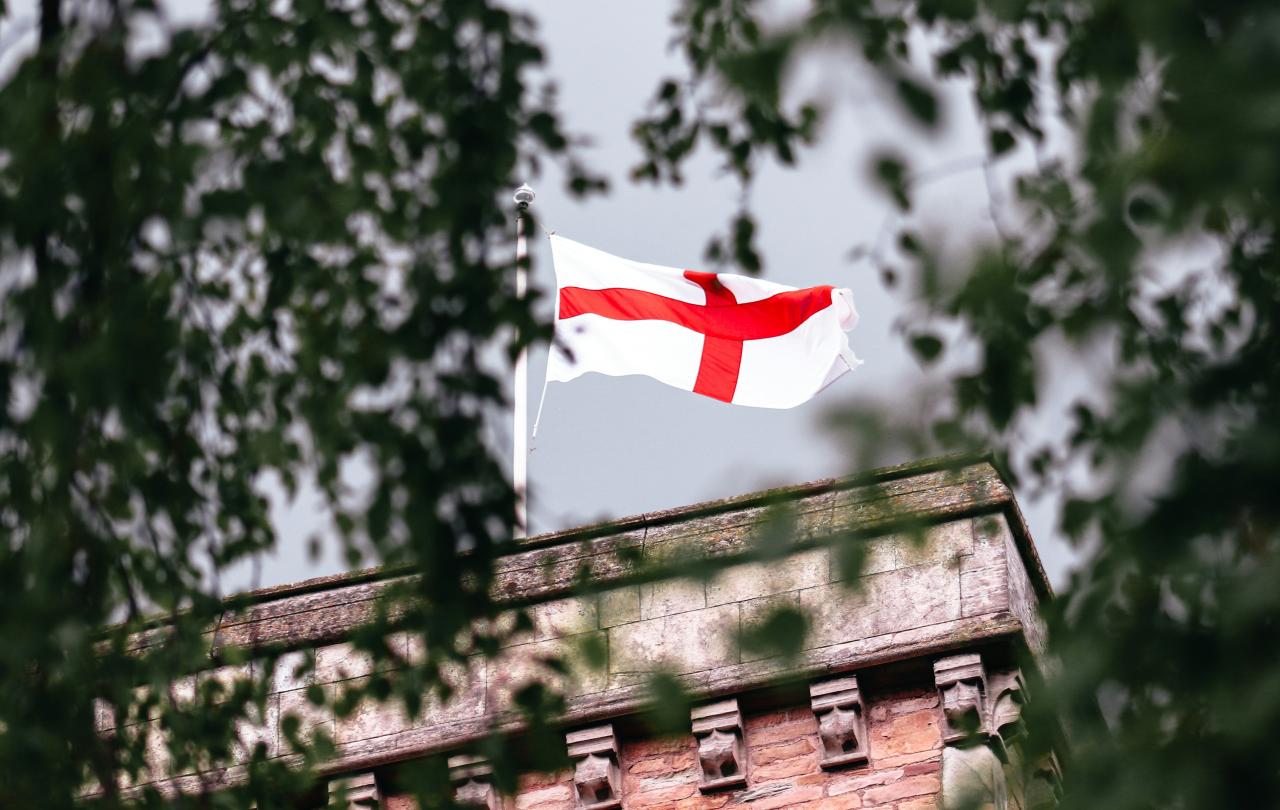
Ben Uri was founded in 1915 in London’s Whitechapel and was named after Bezalel Ben Uri, the craftsman who designed and built the Ark of the Covenant.
Originally it was an art venue for Jewish immigrant artists who were unable to gain access to mainstream art societies at that time. Today it has been reimagined and relaunched, becoming an expansive digital platform designed to be the first stop for information on Jewish, refugee and immigrant artists, designers, dealers and scholars who have made significant contributions to the rich and diverse British cultural mosaic.
In 2023, I curated an online exhibition for Ben Uri exploring migration themes in Biblical images drawn from their Collection.
Themes of identity and migration feature significantly in both the Hebrew and Christian Bibles and images from these Bibles are a substantive element of the Ben Uri Collection. As a result, the exhibition that I curated, Exodus & Exile: Migration Themes in Biblical Images, includes a range of Biblical images from the Collection. This is in order to explore migration themes through consideration of the images, the Bible passages which inspired them and the relationship between the two. The images are presented broadly in the order that the stories on which they are based appear in either the Hebrew or Christian scriptures.
The combination of images and texts I selected from the Ben Uri Collection enabled a range of different reflections, relationships and disjunctions to be explored. These include the aesthetic, anthropological, devotional, historical, sociological and theological. The result is that significant synergies can be found between the ancient texts and current issues. In this way, stories and images which may, at first, appear to be describing or defining specific religious doctrines can be seen to take on a shared applicability by exploring or revealing the challenges and changes bound up in the age-old experience of migration. This was important in writing for an audience including people of all faiths and none, and in writing for an organisation which seeks to surpass ethnic, cultural and religious obstacles to engagement within the arts sector.
“Most of what we’d today call migration is in the Bible, and it’s through migration, not in spite of it, that revelation occurs.”
Engaging in a dialogue between images and texts and with an audience made up of people of all faiths and none, can be revelatory for all involved, particularly those doing the writing. In an essay related to the exhibition, about which I will say more shortly, I discuss the impact of émigré artists, many of whom were Jewish, who contributed artworks that greatly enriched British culture and churches. Another example of someone impacted by the insights of those from another faith community is that of Lord Maurice Glasman, who has written of the part played by Catholic social thought in restructuring his politics, ethics and orientation of thought. He writes that: “It established the Common Good – a negotiated settlement between estranged interests – as the ultimate end of politics. It is Catholic social thought that has guided me through the 2008 crash, Brexit and now the coronavirus. It has been my inspiration and I will be eternally grateful to Catholics and the Church. It was a very generous gift. In the darkest moments, it lights the way.”
Sam Wells, Vicar of St Martin-in-the-Fields, argues that the Bible itself is founded on six journeys, all of which have a bearing on themes of migration: “Jacob and his entourage migrate to Egypt in the midst of famine. This is an economic migration, but really it’s a journey of survival. Moses and the children of Israel migrate from Egypt to the Promised Land. They leave as refugees to flee slavery. They take 40 years to reach their destination, and, when they get there, they face a very hostile environment indeed. Judah loses a battle and is displaced 500 miles to Babylon. There, as Daniel shows, exiles play a vibrant role in public life, and bring unique qualities, represented by the ability to interpret dreams. Jesus travels from Galilee to Jerusalem. He’s living during the occupation by an invading power, Rome. Finally, Paul migrates from Jerusalem to Rome. He’s searching for legal protection in an empire where citizenship transcends geography.” His conclusion is that “most of what we’d today call migration is in the Bible, and it’s through migration, not in spite of it, that revelation occurs”. As a result, we don’t get Judaism or Christianity without migration.
Many of these artists were part of a remarkable generation of refugees from Nazi-dominated Europe who contributed artworks that greatly enriched British culture and churches.
Wells’ approach is one that I adopted in exploring migration themes through Biblical images in the Ben Uri Collection and many of the journeys he mentions feature in the exhibition images. The images I chose, begin with an L. Michèle Franklin watercolour of Adam and Eve. In her image they are naked with heads in hands, lamenting their loss, as they leave Eden. This is an archetypal image of forced migration, with those who have become migrants mourning the loss of the home they loved. The creation stories contained in the Bible quickly lead to a founding act of exile as Adam and Eve are banished from the Garden of Eden. One reading of this story suggests that we are all migrants, outside of a truly harmonious relationship with the world we inhabit but looking to return to our harmonious origins.
The exhibition ends with Horace Brodzky’s 'Supper at Emmaus', an image which comes at the end of a journey and depicts the moment of realisation that the one who had been lost and mourned had in fact been with the travellers throughout their journey. As a result, the realisation comes that what we seek may be with us on the journey or Exodus we undertake, rather than awaiting us at the end. This realisation results in a new journey for the exiles and a return to their people and purpose.
In between come stories of migration in the lives and experiences of the artists who created the images included in the exhibition, with aspects of those stories becoming entwined with the Biblical narratives depicted. Attention is drawn to René Girard’s mimetic theory, whereby imitation of one another gives rise to rivalries and violent conflicts that are then temporarily solved by scapegoating others. Some artists of Jewish origin included in the Collection addressed their experience of persecution through crucifixion imagery and, thereby, played their part in exposing and subverting this scapegoating mechanism.
Many of these artists were part of a remarkable generation of refugees from Nazi-dominated Europe who contributed artworks that greatly enriched British culture and churches. After the Second World War, there was an almost unprecedented expansion of the number of church buildings containing works of art, as churches were repaired or built with new work installed in them. This was a time of impassioned artistic activity, in which the catalyst for the Church was, to a significant extent, émigré artists, many of whom were Jewish. I explore the contribution made by this group of artists in a related essay called Debt Owed to Jewish Refugee Art which is also available through Ben Uri Online.
Will Hutton, writing in The Guardian in 2015, noted that refugees “are, as migration specialist Ian Goldin characterises them, ‘exceptional people’”. He continued: “Over centuries, as [Goldin] painstakingly details, it has been immigrants and refugees who have been part of the alchemy of any country’s success: they are driven, hungry and talented and add to the pool of entrepreneurs, innovators and risk-takers. The hundreds of thousands today who have trekked across continents and dangerous seas are by any standards unusually driven. They are also, as Angela Merkel says, fellow human beings. To receive them well is not only in our interests, it is fundamental to an idea of what it means to be human.” The history of émigré artists in the twentieth century, and the part of that story I explore in this essay and exhibition, reiterates and demonstrates the continuing relevance and significance of that message.
In relation to the story told in my essay, it is a story in which the Church is at the heart of welcome and hospitality, combined with awareness of the immense contribution that refugees make to the culture and economy of their host countries. Our current lack of appreciation for that story, these artists, and their works, is, perhaps, symptomatic of the place in which our nation’s conversation about immigration is currently stuck. My hope is that this exhibition and essay can play a small part in changing that situation.
View the Exodus & Exile: Migration Themes in Biblical Images exhibition.





